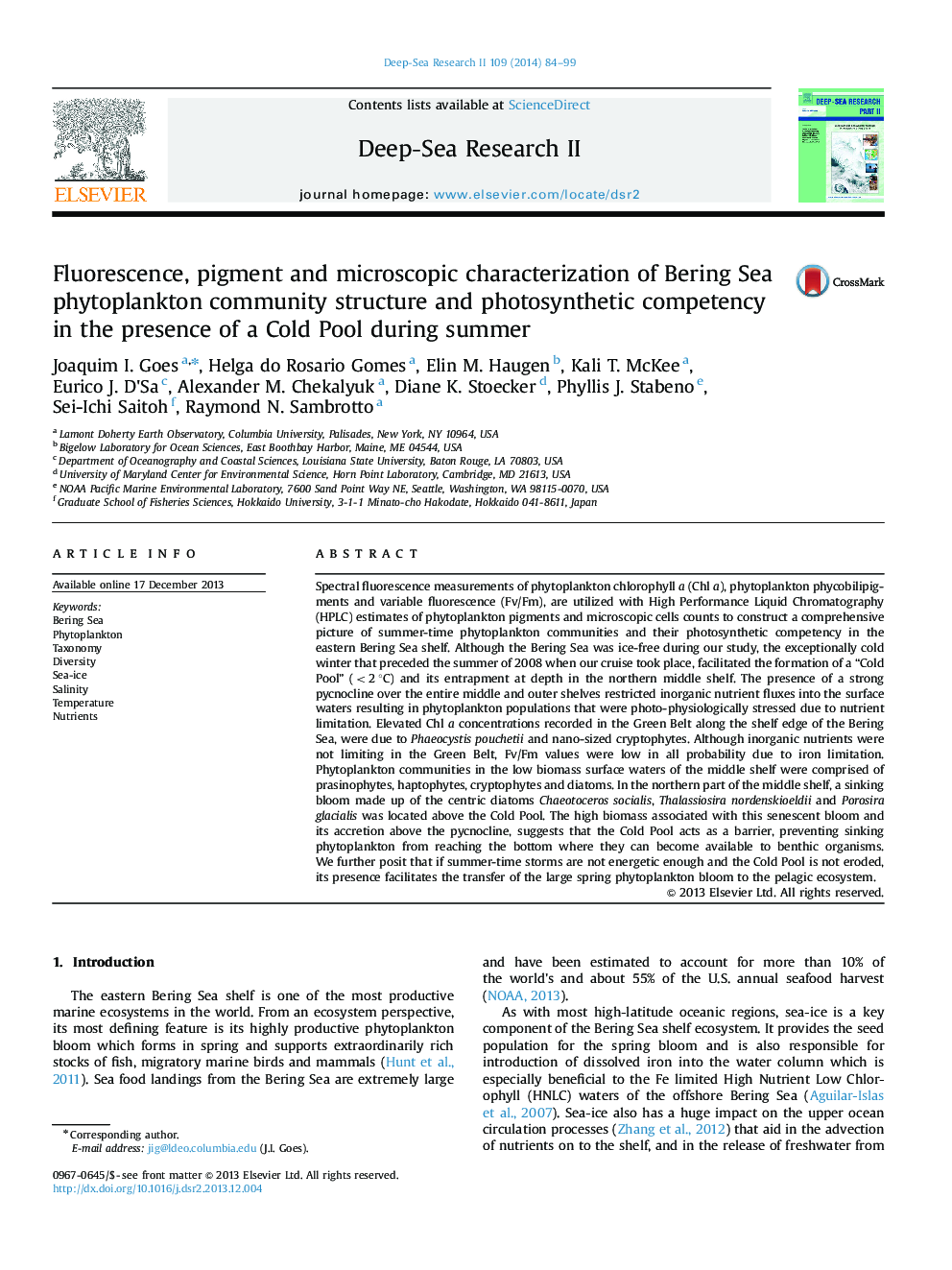| Article ID | Journal | Published Year | Pages | File Type |
|---|---|---|---|---|
| 6384164 | Deep Sea Research Part II: Topical Studies in Oceanography | 2014 | 16 Pages |
Spectral fluorescence measurements of phytoplankton chlorophyll a (Chl a), phytoplankton phycobilipigments and variable fluorescence (Fv/Fm), are utilized with High Performance Liquid Chromatography (HPLC) estimates of phytoplankton pigments and microscopic cells counts to construct a comprehensive picture of summer-time phytoplankton communities and their photosynthetic competency in the eastern Bering Sea shelf. Although the Bering Sea was ice-free during our study, the exceptionally cold winter that preceded the summer of 2008 when our cruise took place, facilitated the formation of a “Cold Pool” (<2 °C) and its entrapment at depth in the northern middle shelf. The presence of a strong pycnocline over the entire middle and outer shelves restricted inorganic nutrient fluxes into the surface waters resulting in phytoplankton populations that were photo-physiologically stressed due to nutrient limitation. Elevated Chl a concentrations recorded in the Green Belt along the shelf edge of the Bering Sea, were due to Phaeocystis pouchetii and nano-sized cryptophytes. Although inorganic nutrients were not limiting in the Green Belt, Fv/Fm values were low in all probability due to iron limitation. Phytoplankton communities in the low biomass surface waters of the middle shelf were comprised of prasinophytes, haptophytes, cryptophytes and diatoms. In the northern part of the middle shelf, a sinking bloom made up of the centric diatoms Chaeotoceros socialis, Thalassiosira nordenskioeldii and Porosira glacialis was located above the Cold Pool. The high biomass associated with this senescent bloom and its accretion above the pycnocline, suggests that the Cold Pool acts as a barrier, preventing sinking phytoplankton from reaching the bottom where they can become available to benthic organisms. We further posit that if summer-time storms are not energetic enough and the Cold Pool is not eroded, its presence facilitates the transfer of the large spring phytoplankton bloom to the pelagic ecosystem.
